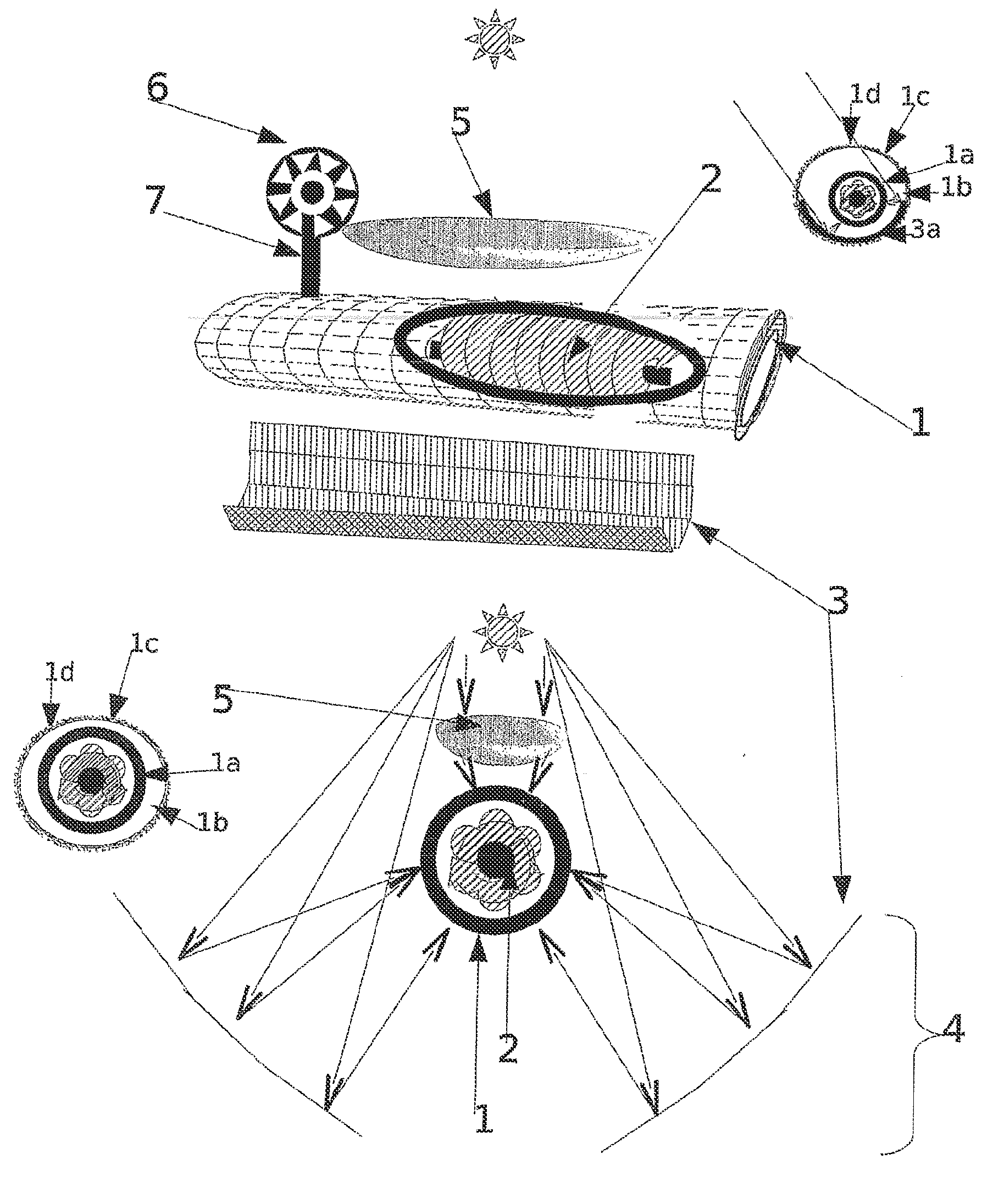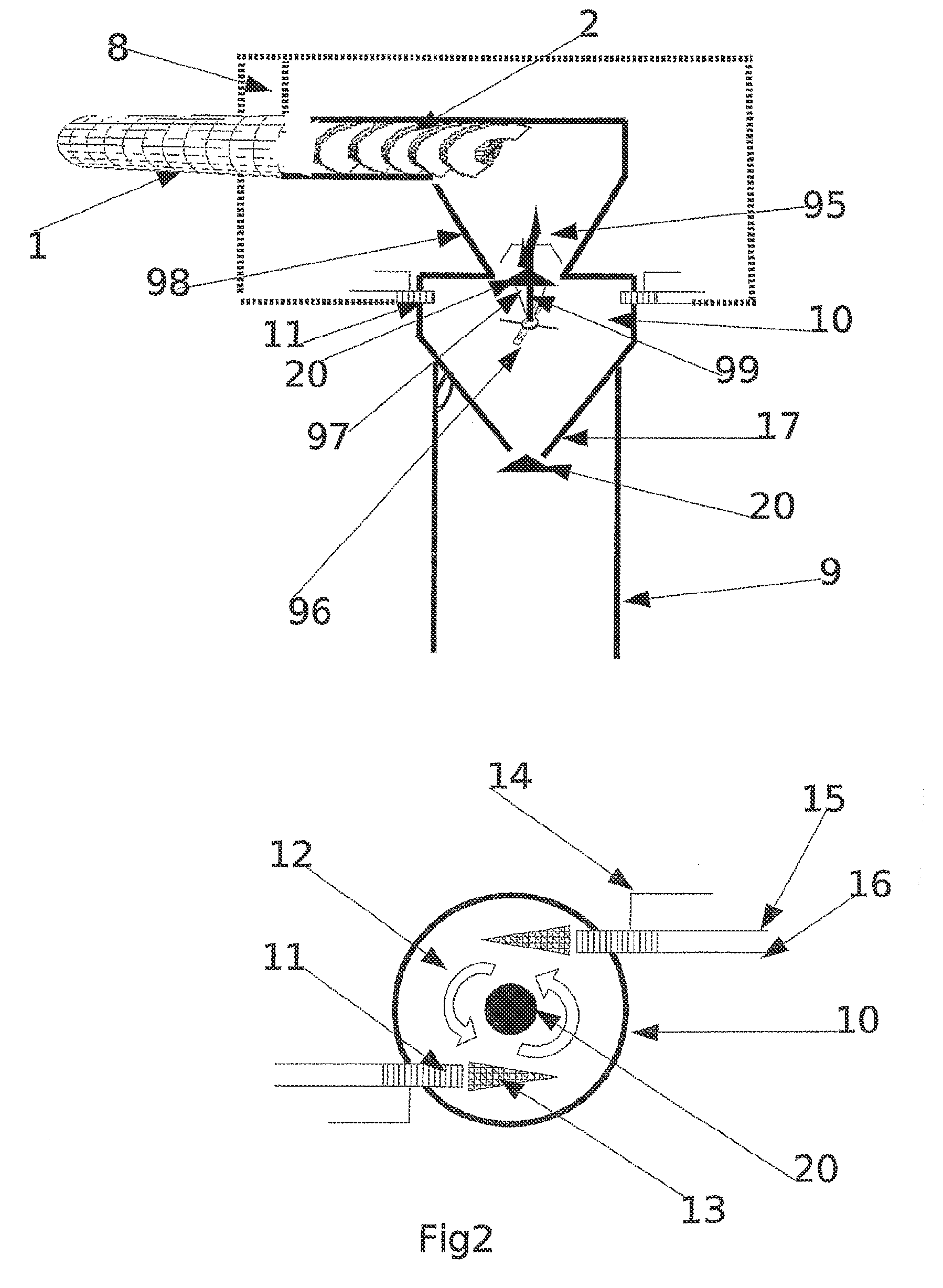Method using solar energy, microwaves and plasmas to produce a liquid fuel and hydrogen from biomass or fossil coal
a technology of solar energy and plasma, which is applied in the field of solar energy, microwaves and plasma to produce liquid fuel and hydrogen from biomass or fossil coal, can solve the problems of unsatisfactory solutions, further complicated problems, and huge crop acreage needed for offering energy self-relian
- Summary
- Abstract
- Description
- Claims
- Application Information
AI Technical Summary
Benefits of technology
Problems solved by technology
Method used
Image
Examples
Embodiment Construction
[0067]1.1 In one embodiment, the functional unit enabling torrefaction and pyrolysis of the substrate is a solar / microwave oven reactor (F_smo) consisting of a pipe (FIG. 1.1) with a diameter of between 1 centimeter and 5 meters and a length of between 10 centimeters and 10 meters. The pipe will be, for example, made of a refractory material such as (but not limited to) carbon covered with ceramic, ceramic, tungsten steel, titanium, nickel and so on.
[0068]At the center of the pipe, a worm screw (FIG. 1.2) is provided, enabling the biomass or the coal to move through the opening of the pipe. The substrate may be organized in homogeneous or non-homogeneous granules or particles with a size between several millimeters to several centimeters. In this document, granules and particles will be referred to as granules. Outside the pipe at a constant distance, along the length thereof, one or more mirrors or solar concentrators are provided, for example aluminum (FIG. 1.3), enabling the ligh...
PUM
 Login to View More
Login to View More Abstract
Description
Claims
Application Information
 Login to View More
Login to View More - R&D
- Intellectual Property
- Life Sciences
- Materials
- Tech Scout
- Unparalleled Data Quality
- Higher Quality Content
- 60% Fewer Hallucinations
Browse by: Latest US Patents, China's latest patents, Technical Efficacy Thesaurus, Application Domain, Technology Topic, Popular Technical Reports.
© 2025 PatSnap. All rights reserved.Legal|Privacy policy|Modern Slavery Act Transparency Statement|Sitemap|About US| Contact US: help@patsnap.com



